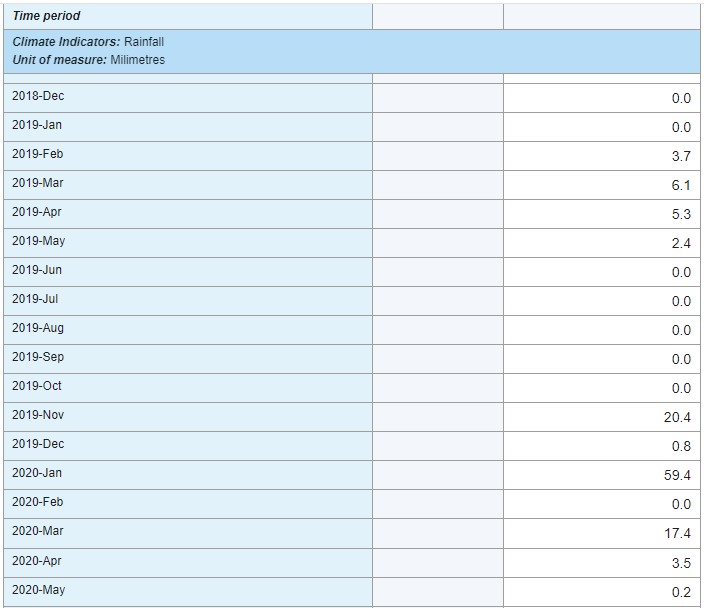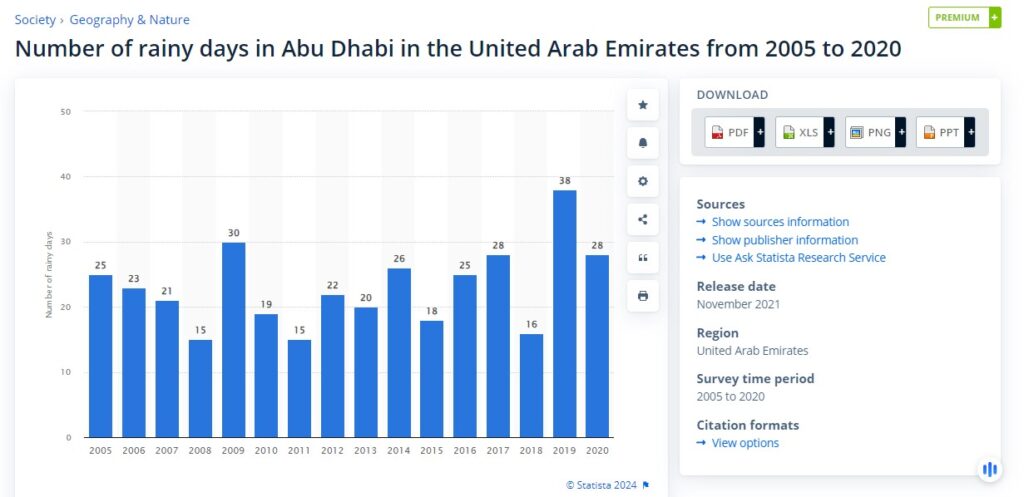On 14 February 2024, Prime Minister Modi inaugurated the Bochasanwasi Akshar Purushottam Swaminarayan Sanstha (BAPS) Hindu Mandir in Abu Dhabi, marking the first Hindu stone temple in the United Arab Emirates. Against this backdrop, a viral video depicts rain falling over the newly constructed temple in UAE, with a claim attributing the rain to the divine power of Hindu Gods. The video is accompanied by assertions that it had never rained in the area until the day before the temple’s inauguration. The Hindi caption loosely translates to, ‘This is the power of Sanatan Dharma where it never rained, it rained for the first time after the construction of Ram temple.’ In this article, we aim to fact-check the claims made in the post.

Claim: It had never rained in the area until the day before the inauguration of BAPS Hindu Mandir in Abu Dhabi.
Fact: According to information from the UAE government, Abu Dhabi and other parts of the country have experienced rainfall on numerous occasions over the years. For instance, in January 2020, Abu Dhabi received approximately 60mm of rainfall. While the inauguration of the Hindu temple in Abu Dhabi coincided with rainfall, it is not the first instance of rain in the area. Hence, the claim made in the post is FALSE.
During his two-day visit to the UAE, Prime Minister Modi inaugurated the Bochasanwasi Shri Akshar Purushottam Swaminarayan Sanstha (BAPS) Hindu temple in Abu Dhabi on 14 February 2024. This temple marks the first traditional Hindu stone temple in the UAE and is situated in Abu Mureikhah near Al Rahba, off the Dubai-Abu Dhabi Sheikh Zayed Highway.
However, the inaugural event coincided with adverse weather conditions and showers, as viral visuals depict rain over the temple the day before the inauguration. Yet, the claim that the area where the temple stands had never experienced rain until the day before the inauguration is inaccurate. Historical data on precipitation in the UAE, especially in Abu Dhabi city, available from the UAE’s Federal Competitiveness and Statistics Centre, indicates otherwise.
Essentially, the weather in the UAE is examined by dividing the area into distinct climate zones and collecting weather data from various local weather stations, all of which are subordinated to the main station. Consequently, we presumed that the BAPS Hindu temple is associated with the Abu Dhabi Airport weather station, based on Google Maps indicating a distance of approximately 30 kilometers between the temple and Abu Dhabi Airport, also referred to as Zayed International Airport. In contrast, the other weather stations are situated hundreds of kilometers away from the temple.

Based on the most recent precipitation data spanning from 2016 to 2020, Abu Dhabi received around 60mm of rainfall in January 2020. The data highlights numerous instances of rainfall across Abu Dhabi and other weather stations in the UAE.

Additionally, between 2005 and 2020, Abu Dhabi encountered 15 to 30 days of rainfall annually. The year 2019 recorded the highest number of rainy days at 38, while 2005 and 2011 had the lowest with only 15 rainy days each.

Additionally, the World Bank’s Climate Change Knowledge Portal has outlined future precipitation projections for the UAE, referencing data from the period 1986 to 2005. Consequently, all of this information confirms that Abu Dhabi has experienced rainy days over the years, and the recent rainfall coinciding with the inauguration of the Hindu temple is not unprecedented.

To sum it up, the rainfall during the inauguration of the Hindu temple in Abu Dhabi is not the first instance of rain in the city.



